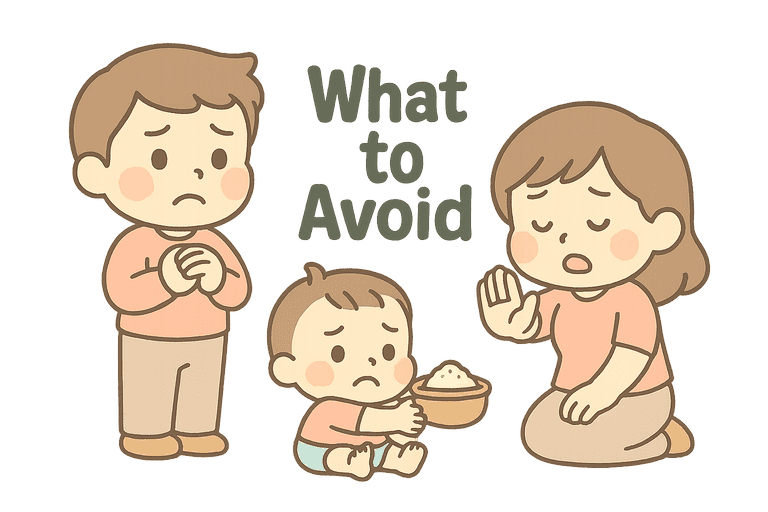
My eight-month-old developed rashes—does anyone have a mild remedy?
Common Infant Rash Types and Mild Remedies
| Type of rash | Typical cause | Mild home remedy |
|---|---|---|
| Heat Rash (Prickly Heat) | Hot, humid weather causing sweat gland blockage | Keep baby cool with light cotton clothing and cool baths |
| Diaper Rash | Wetness and friction in diaper area | Frequent diaper changes and application of zinc oxide cream |
| Eczema (Atopic Dermatitis) | Skin barrier impairment and allergies | Moisturize with fragrance-free emollients twice daily |
| Allergic Contact Rash | Reaction to detergents or lotions | Identify and avoid irritant, use mild soap and apply soothing lotion |
Quick Answer

Most mild rashes in eight-month-old babies can be soothed with gentle home remedies like cool compresses, frequent diaper changes, and applying fragrance-free moisturizers.
Keeping the baby's skin clean, cool, and dry helps prevent worsening.
Avoid harsh soaps and scented products which can irritate sensitive skin.
Monitor the rash and seek medical advice if it spreads, is accompanied by fever, or does not improve in a few days.
Recommended Practices

Cool Compresses
Apply a soft, cool, damp cloth to the rash area for 5–10 minutes, 2–3 times daily to reduce inflammation and itching.
Mild Bathing Routine
Give a lukewarm bath once daily using a gentle, fragrance-free baby wash, limiting baths to 5 minutes. Pat the skin dry without rubbing.
Fragrance-Free Moisturizer
Gently apply a hypoallergenic, fragrance-free emollient to the rash after bathing and 2–3 times throughout the day to maintain skin hydration.
Loose Cotton Clothing
Dress your baby in breathable, 100% cotton clothes and change outfits immediately if they become damp or sweaty to allow skin to breathe.
Frequent Diaper Changes
For diaper-area rashes, change diapers every 2 hours or right after they are soiled. Clean gently with water, pat dry, and apply a thin layer of barrier cream.
Identify and Remove Triggers
Keep a diary of new foods, lotions, or detergents introduced in the past week. Eliminate one potential trigger at a time to see if the rash improves.
What to Avoid

Harsh Soaps and Detergents
They strip natural oils, worsening dryness and irritation.
Scented Lotions and Talcs
Fragrances can cause allergic reactions and further irritate sensitive skin.
Tight or Synthetic Clothing
Non-breathable fabrics trap heat and moisture, aggravating rashes.
Overheating or Excess Bundling
Can lead to heat rash; keep the baby comfortably cool.
Scratching or Vigorous Rubbing
Breaks the skin barrier, increasing the risk of infection.
Unprescribed Topical Steroids
May thin the skin and cause side effects if used without medical guidance.
Common Scenarios and Solutions


Heat Rash (Prickly Heat) in Summer
Dress baby in light cotton, keep rooms well-ventilated or use a fan, give cool baths, and apply a talc-free powder if skin is very sweaty.
Diaper Rash in Monsoon
Change diapers more frequently, clean gently with water only, let the area air dry for a few minutes after cleaning, and use a zinc oxide barrier cream.
Eczema Flare-up After New Food
Stop the suspected food, soothe skin with a thick, fragrance-free moisturizer, and consider reintroducing foods one at a time under paediatric guidance.
Contact Rash from Detergent
Wash baby’s clothes twice to remove detergent, switch to a mild, dye-free cleanser, and apply moisturizer after washing new garments.
Similar Questions Parents Ask


What causes heat rash in babies?
Heat rash occurs when sweat ducts clog in hot, humid conditions, leading to small red bumps or blisters.
How often should I bathe my rash-prone baby?
Limit baths to once daily with lukewarm water and gentle cleansers to avoid drying the skin.
Can dietary changes reduce skin rashes?
Eliminating one new food at a time, especially common allergens like dairy, can help identify triggers.
Is over-the-counter hydrocortisone safe for infant rashes?
Mild 1% hydrocortisone creams should only be used under doctor supervision for short periods.
Signs to Consult Immediately


Rash accompanied by a fever over 38°C (100.4°F)
Rapidly spreading rash or presence of blisters
Pus, yellow crusting, or signs of infection
Difficulty breathing or facial swelling
Persistent crying or extreme irritability
Detailed Explanation


Mild infant rashes occur when the skin’s outer protective barrier is disrupted, leading to inflammation.
The skin reacts to irritants, heat, moisture, or allergens with redness, bumps, or itching.
Maintaining the skin’s natural barrier is key to preventing and healing rashes.
In healthy babies, mild rashes are common between 6–12 months due to factors like teething drool, new solid foods, heat, and diaper use.
These rashes often resolve within a few days with gentle care, but it is important to monitor changes carefully.
Warning signs that need medical attention include spreading rash beyond the initial area, presence of blisters, oozing or yellow crusts, fever above 38°C (100.4°F), or if the baby appears unwell or irritable.
Early consultation can prevent complications.
For babies aged 0–3 months, the skin is very delicate; bathing should be especially brief and moisturizers applied sparingly.
Between 3–6 months, the immune response strengthens but the barrier remains sensitive.
From 6–12 months, babies crawl and are exposed to more environmental triggers, so protective practices become crucial.
Premature infants or those with eczema have a weaker skin barrier and may need more frequent moisturizing and specialized emollients.
Avoid products with harsh preservatives or alcohol; consult a dermatologist for prescription treatments if necessary.
Seasonal factors in India affect rash risk: summer heat often causes prickly heat, monsoon humidity can lead to fungal rashes, and winter dryness may exacerbate eczema.
Adjust bathing frequency and moisturizer type according to the season, keeping skin clean and hydrated.
Sources
Recommended Reading for Parents
Comprehensive AAP guide available online and in bookstores across India.